Showing 13–24 of 301 results
It is well-known that the Jain tradition has been extremely influential in the development of Indian thought and culture. The Jain tradition teaches that there is an interdependence of perception, knowledge, and conduct unified by an axiomatic principle of non-violence in thought, speech, and action. In this way, non-violence defines the core of the Jain tradition, which has had a profound effect on other dharmic traditions originating in India. Jain Dharma is so significant that in some ways it may be incomplete to attempt to understand other Indian traditions (such as Buddhism or Hinduism) without knowing the basics of the Jain tradition, since these other traditions developed in an ongoing dialogue with the insights and wisdom of Jain respondents and visionaries.
This book enables the reader to enjoy a comprehensive journey into the intricate world of Jain thought and culture in a way that is philosophical in its compelling rationality, deeply spiritual in its revelations, yet accessible in its language. The organization of this book allows the reader to engage in an overview of the central teachings of the Jain tradition, but also to ascertain the profundity of its depths. It can be read with equal efficacy in succession from beginning to end, or pursued by individual topics of interest to the reader. Either strategy will have the same effect: a systematic understanding of what the timeless teachings of Jain thinkers have to say about the universal issues of the human condition – and how we might understand our harmonious relationship with other living entities as a powerful and effective spiritual journey.
Vedanta holds an unparalleled and unique place among the six systems of Indian philosophy. Though the Vedas are the fountainhead of Indian philosophical systems, Vedanta incorporates the philosophical thoughts resplendent in the Upanishads, the Brahmasutras, the Bhagavatgita, and in the commentaries on all these texts.
An Introduction to Vedanta introduces the Vedanta philosophy in brief and talks about its cardinal issues like self-control and the meaning of worship, maya and its gunas, upadhi, the theory of cycle, subtle bodies, the role of meditation, samadhi and its four major obstacles, Brahman realization and the state of a jivanmukta and his relation with Brahman and the world.

This book helps one understand bhakti in its historical, philosophical and social persepectives.Two medieval women, Andal, from Tamil Srivaisnavite tradition, and Akka Mahadevi, from Virasaivite tradition, with their poetic renderings and life, are in focus. It also helps to extricate bhakti experience from its mystical aura and make it more accessible to our perceptive faculties.
Bhakti poetry is an amazing amalgamation of art, music, literature, philosophy, politics, soteriology and mysticism. Andal and Akka Mahadevi: Feminity to Divinity reflects this amalgamation in letter and spirit. Two medieval women, Andal, a ninth-century Alvar saint-poetess from Tamil Srivaisnavite tradition, and Akka Mahadevi, a twelfth-century Kannada saint-poetess from Virasaivite tradition, with their poetic renderings and life, got elevated to a stature beyond that of saints.
This book deals with three major aspects. One, understanding of bhakti in its historical, philosophical and social perspectives. It thus delves on the idea and phenomenon of bhakti, the ancient religions and the evolution of bhakti tradition in south India. Two, it portrays the life of poet-saints Andal and Akka Mahadevi and their chosen path of bhakti. Their poetic renderings Tiruppavai and Nachiar Tirumoli of Andal, and vacanas of Akka Mahadevi
have found merit in rituals, theatre, cinema, dance, painting and other arts. The textual analysis of their poetry is done from religious, literary and socio-political angles. Three, it reflects on how the works of these saints have percolated down to the living patterns in modern India; rather it is a dedication to the living traditions in bhakti.
This volume also helps to extricate bhakti experience from its mystical aura and make it more accessible to our perceptive faculties. Thus it enthuses the spirit of anyone, be an artist, a poet, a philosopher, or a scholar.

The book consists of a series of dialogues about the Ao Naga world-view, their traditions, rituals and ethical norms, and their ideas of history and objects of veneration among elders of the Ao Naga tribe, Ao Naga intellectuals and scholars.
The book, as the title says, consists of a series of dialogues about the Ao Naga world-view, their traditions, rituals and ethical norms, and their ideas of history and objects of veneration. The dialogue took place in specially organized meetings and participants were drawn from elders of the Ao Naga tribe, Ao Naga intellectuals and scholars, a student and a visitor from outside.
The conversations that took place in these meetings were recorded and what appears in the book is a very lightly edited version of the recorded conversations. The philosophically interesting aspects of these conversations are the views expressed by various participants on the human condition, the ethical grounding of human life, the dividing line between life and death, and about their institutions for educating the young and dispensing justice.
The book aims to achieve a twofold objective: (1) to secure an authentic articulation of the traditional Ao world through a dialogue between different Ao voices (an aim pursued very differently from the anthropologists participant observation), and (2) clearing the ground for the reflection of philosophical insights thrown up in the process of this articulation. The insights will be obvious to the sympathetic and discerning reader; the reflection is left to those who will read the book with serious philosophical interest.
Sujata Miris paintings are an insightful addition to the dialogic explorations of the book.
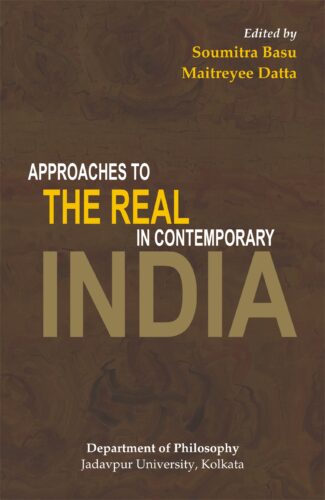
This volume focuses on those issues of the “Real” which have been treated and discussed by the philosophers of contemporary India such as K.C. Bhattacharyya, Surendranath Dasgupta, S. Radhakrishnan, Ras-Vihari Das, P.T. Raju, Satchidananda Murty and J.N. Mohanty.
“Man’s inquisitiveness to know about the “Real” has its origin in the philosophical traditions of the West and the East alike. For the ancient Greeks, the Real was metaphysical in nature and they sought to determine the nature of the real through the teachings of philosophers like Aristotle. These views later found place in the philosophy of many Christian fathers of the medieval period. With the Renaissance, the Western philosophy underwent an epistemic turn, so also discussions on the Real. In Indian philosophical heritage, the classical Indian philosophers of different philosophical systems too tried to grasp the concept of the Real from different theoretical frameworks and envisaged certain conclusions. The articles presented in this volume focus on those issues of the Real which have been treated and discussed by the philosophers of contemporary India such as K.C. Bhattacharyya, Surendranath Dasgupta, S. Radhakrishnan, Ras-Vihari Das, P.T. Raju, Satchidananda Murty and J.N. Mohanty. It also gives a glimpse on Professor Mohanty’s view on the Einstein–Tagore controversy.”

This book targets those persons who seek to learn about and understand the multiple forms of religious or spiritual or secular life, across the globe. It aims to foster mutual understanding, communication and dialogues between persons having different religious, spiritual and secular orientations.
The book, more than a philosophic endeavour, elaborately and meticulously discusses a vibrant thought – Are You Religious or Spiritual, or Atheist or Secular, or What? – for our deep contemplation and action, and suggests means to address the challenges that crop up in our spiritual life in a simple and lucid style. It is focuses on those persons who seek to learn about and understand the multiple forms of religious or spiritual or secular life. It aims to foster mutual understanding, communication and dialogues between persons having different religious, spiritual and secular orientations, and calls for a peaceful coexistence of people of different world views. In the present world spiritual scenario, it suggests a spiritual alternative of letting go with love and compassion, which is highly appealing. Also it gives an overview of the major religion of the world, keeping in mind both religious and non-religious people and persons from all walks of life. The unique feature of this volume is its down to earth practicality and simplicity in introducing, analysing and guiding its readers when dealt with a complex topic of religion and spirituality.
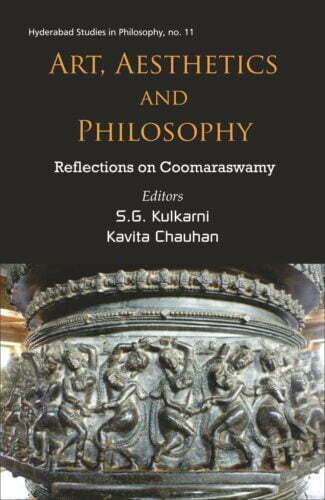
This book presents the varied reflections on Coomaraswamys personality as a philosopher, art historian, art curator and his strong positioning against the colonial teachings of Western art historians and philosophers on Indias art, civilization and culture, projecting an image of Indianness in every sphere.
The savants of the twentieth century have excavated the past to discerningly reveal the present. Swami Vivekananda, Rabindranath Tagore, Sri Aurobindo, Mahatma Gandhi and Ananda Coomaraswamy, among others, interpreted Indian aesthetics, civilization, culture and philosophy unearthing the Indian wisdom against the wrong interpretations and teachings of the Western colonial scholars. This volume, a collection of papers presented at a national seminar on the Philosophy of Ananda Coomaraswamy held in February 2011 at the University of Hyderabad, approaches Coomaraswamys philosophy on Indian aesthetics, life and religion from different perspectives.
The volume brings forth different facets of Coomaraswamy: as a catalyst in spiritualizing Indian arts; his views on modernism and anti-modernism; his efforts in aestheticizing India; his polemics of decolonization through art criticism; his aesthetical philosophy; his perception and understanding on art, culture and Indianness; his metaphysics; and his philosophical approach to visuals and materials from the lens of an art historian. It sketches Coomaraswamys multifaceted persona, enunciating that the crux of modern Indian philosophy is one of vision, rather than building theories.
In a nutshell this book presents the varied reflections on Coomaraswamys personality as a philosopher, art historian, art curator and his strong positioning against the colonial teachings of Western art historians and philosophers on Indias art, civilization and culture, projecting an image of Indianness in every sphere.

This book talks about the guruhood of Nataraja Guru, a true absolutist and a disciple of Narayana Guru, how he grafted it on to a global background, how his discoveries in philosophy open up a new age in human understanding, and his genius in restating yoga as a modern perennial science of dialectics applicable in all fields.
Nataraja Guru’s guruhood is pure and philosophically correct, making as few concessions as possible to relativistic or social notions. He is a guru of absolutist truth. It is too rare to be popularly understood. It is not the popular conception of the Upanishadic or the ashramic pattern. It is a new form of guruhood, made for a really global world. The Guru Narayana did the initial spadework here in breaking through the fixed Indian orthodox patterns, as far as he was able in his own lifetime to do so, without entirely destroying the background. His work was experimental, and his success showed the way to the one disciple, Natarajan, to plunge ahead on a wider and entirely universal scale. Nataraja Guru therefore has grafted guruhood on to a global background. For this work the absolutism of guruhood has to be stressed more than the religious or even the conventional yogi aspect as known to India.
Nataraja Guru never wanted a following, least of all of blind believers. He only asks for reasonable understanding of the pure principles for which he stands and not in any cloud-soaring sense either, but in immediately applicable relationship with any or every given actual situation; nor in works but in understanding alone.
His discoveries in the field of philosophy open up a new age in human understanding. Through his genius, for the first time clear sense emerges out of the hitherto baffling expressions of Indian thought, while the ways of Indian spirituality cease to be a mystery. So at one stroke minds are cleared and much delusion and superstitions trickery in the philosophic-religious field are destroyed. How bold and wonderful is his genius in restating yoga as a modern perennial science of dialectics applicable in all fields!
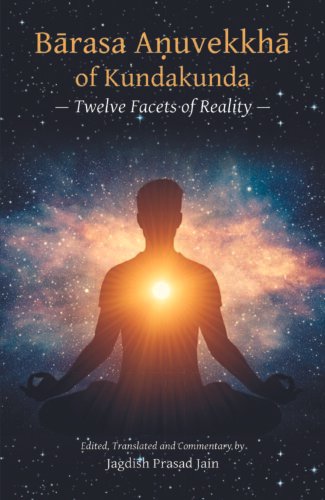
This book is commentary on Barasa Anuvekkha, one of the main works of Acarya Kundakunda, a great Digambara Jaina monk. This edited and translated volume talks about twelve reflections going by the reality of Jaina ethics and spiritual journey, both for the Jaina ascetics and the householder followers, though with minute differences.
“This volume presents a comprehensive analysis of the twelve affirmations/contemplations, which encompass virtually all the principles and cardinal teachings of Jainism. Being reflections upon the fundamental facets of life, their practice assists in moral and spiritual progress. They enable aspirants to move from the realm of desire to the path of renunciation. They are conducive to the stoppage of the influx and shedding of karmas and through discriminative insight (enlightenment) can lead to attaining mokÈa (liberation).
The book will be an indispensable reference work for scholars and students of Indian philosophy and religion, particularly Jainism.
“

This beginner-friendly book offers a clear and concise introduction to Indian philosophy, covering key concepts, major schools of thought, and progressive ideas like Vedic feminism and environmental awareness. Ideal for curious minds, it encourages deeper exploration.
“This introductory book on Indian philosophy is thoughtfully crafted for beginners and inquisitive readers interested in exploring the core concepts and varied traditions of this rich intellectual heritage. It is not aimed at advanced scholars or regular students, but at sincere seekers ready to embark on their initial journey into the subject. Presented with clarity and ease, it offers a solid foundation and encourages further engagement with original texts and academic perspectives.
Covering ten essential topics, the book touches upon the common characteristics of Indian philosophy, environmental awareness as reflected in the Vedas, and Vedic feminism – highlighting the progressive and inclusive elements of early Indian thought. It also introduces readers to key texts like the Upaniṣads and explores major philosophical schools, including Cārvāka (materialism), Bauddha (Buddhist), and Jaina philosophies, as well as the Nyāya–Vaiśeṣika, Sāṁkhya–Yoga, and Mīmāṁsā–Vedānta systems.
Each chapter offers a brief yet insightful overview, making complex philosophical ideas approachable for new learners. The inclusion of an epilogue adds further value by guiding readers toward additional resources for advanced study, expanding their understanding beyond the scope of the book.
This book is ideal for anyone interested in the spiritual, ethical, and metaphysical inquiries that have shaped Indian tradition. With its concise explanations and thoughtful structure, it is a valuable companion on the journey into Indian philosophical thought.”
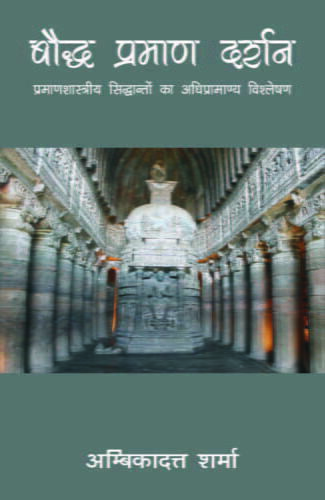
Making the basic doctrines of Buddhist epistemology the fundamental point of reference, this treatise attempts have been made to demonstrate that how Indian epistemological intellection/thinking keeps metaphysics in itself as a bequest, and in its expanding/enlarging form it persistently expresses the metaphysical divisions.
In Indian tradition of knowledge, the historical advancement of epistemological intellection/thinking flourished through five alternative points of departure, where the first belongs to Maharshi Gautama, who showing priority of epistemology over metaphysics, proposes a constructive model of epistemology. In opposition to this universally acceptable postulation of Maharshi Gautama, three refutative points of departure of epistemological critique of Nagarjuna, Sri Harsha and Jayarasi Bhatta progressed. These three attain their cognitive termination either in the severance of the priority and the position of episteme or in the deconstruction of epistemology. The fifth point of departure evolves from Tarka Pungava Dinnaga, which, parallel to Gautamas exposition and as an option of substitution to Nagarjunas epistemic displacement, presents a reconstructive model of metaphysical epistemology.
In this treatise, an effort has been made to understand the foundational structure of the aforementioned Bauddha Prasthan through certain basic principles, which happen to be the deciding factors/determinative agents in respect of dissensions relating to the matter and corollary, features, and a number of episteme and alternative approaches. From the espoused system of analysis and explication for the purpose, the meta-epistemic dimension of epistemological intellection/thinking of Indian philosophy gets revealed. In fact, it is in this dimension, the optional feature of epistemological doctrines can be recognized to know further that why any epistemological assessment/appraisal is like this?, why isnt it different? In this way, making the basic doctrines of Buddhist epistemology the fundamental point of reference, this treatise attempts have been made to demonstrate that how Indian epistemological intellection/thinking keeps metaphysics in itself as a bequest, and in its expanding/enlarging form it persistently expresses the metaphysical divisions.
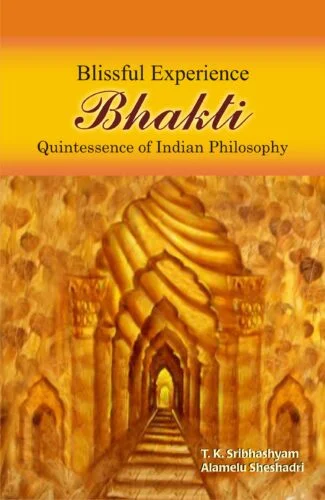
The study discusses importance of bhakti (devotion), pràpatti (self-surrender) and cultivation of peaceful emotions drawn from the great àcàrya’s intense and contemplative study of the Vedas, Upaniùads, the Bhagavad-Gãtà and the Puràõas.
Bhakti-yoga is seen as the direct path to perfection that leads to the very heart of religious consciousness. Ramanujas concept of bhakti (devotion) emphasised the practice of self-surrender through which a person realises his personality, strengths and weaknesses, and hidden powers. Bhakti, for him, acts as a link between mortals and the Ultimate Reality.
This book examines the views of Vishishtadvaita of Ramanuja on bhakti and prapatti (self-surrender). It studies in-depth the meaning of God, the soul and the Supreme Soul, and the world; the concept of bhakti; the different stages of bhakti referring to numerous sources that include the Vedas, the Bhagavad-Gita, the Upanishads and the Puranas. It focuses on Ramanujas teaching of bhakti, examining his philosophy in general and his sevenfold practice, Sadhana Saptaka to generate bhakti that expounds the qualities and significance of discrimination for viveka, freedom from sensual attachment or anger for securing vimoka, repeated reflection of God, performance of religious duty for inner mental strength, development of ethical virtues, freedom from despair and freedom from excessive joy. It understands the relevance of symbols in devotion and examines nature and use of symbols in Buddhism and Hinduism. The scholarly study discusses the importance and cultivation of peaceful emotions, and need for prayer and dietary regulations in devotion.
The volume will prove an indispensable work for scholars of Indian philosophy and religious studies.
| There are no products |